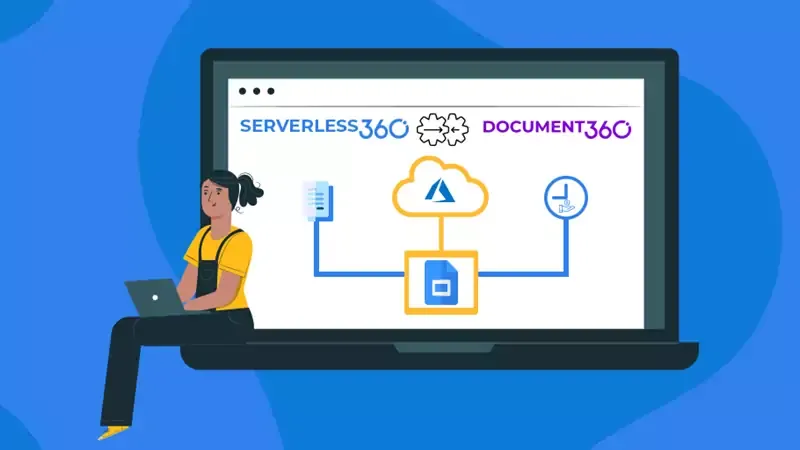Introduction to Azure Documenter - Azure documentation Generator
Here comes the Azure Documenter in Serverless360, an Azure documentation generator to solve challenges in documenting Azure Subscription.- Article authored by Kunal Chowdhury on .
Here comes the Azure Documenter in Serverless360, an Azure documentation generator to solve challenges in documenting Azure Subscription.- Article authored by Kunal Chowdhury on .
Azure has made tremendous growth in the last decade. This is due to the rapid cloud adoption by various enterprises and organizations around the world. When cloud expenses increase, it becomes difficult to track and understand the utilization of Azure Resources. Lack of proper documentation leads to many problems as mentioned. Nevertheless, preparing documentation itself turns into a tedious task due to the multi-tenant architecture of Azure.
Here comes the Serverless360 Azure Documentation Tool to solve challenges in documenting Azure Subscription. This article will give you an overview of what is Azure Documenter and its benefits.

Azure Documenter is an Azure documentation generator that offers better readable documentation having an executive summary with all the details of your Azure subscription usage right from resource groups, resources, Active Directory users, cost & billing, etc.

Like any other cloud service provider, Microsoft Azure makes it easy to instantiate and deploy resources at ease on a subscription basis. Though the limits on the usage and restricted user permissions could be set, the resource deployment and usage will grow day by day. This is due to the nature of the business demands for various purposes.
Deployment of resources in Microsoft Azure is made so simple but without proper auditing and documentation, this may lead to situations where resource management becomes uncontrollable.
Almost every day, the resources and environments are created, modified, deleted by different teams, and automated based on requirements. User will face many challenges in maintaining the documentation and it is listed below:
All these challenges in documenting Azure subscriptions can be overcome by an Azure Documentation generation tool like Serverless360 Azure Documenter.
Azure offers in-house documentation generating tool called Azure Workbook. Within the Azure portal, the Azure Workbook provides you a flexible canvas for data analysis and the creation of rich visual reports. It generates documents based on various data sources like Logs, Metrics, Azure Resource Graph, and more.

Even though Azure Workbook offers dynamic reports, it does not offer the capabilities required for Business users. As a Business user, you would need better cost visualization, sharing, version control, and many more. Below are a few major requirements for modern documentation:
| Specifications | Serverless360 Azure Documenter | Azure Workbook |
|---|---|---|
| Markdown Editor | Offers Markdown as well as WYSIWYG support | Offers Markdown |
| Cost Visualization | Detailed Cost visualization is available | Not available |
| Version control | Version control along with User activity tracking is available | Version control is not available |
| Offline Version | Offers PDF version to store the report in physical format | Cloud version only available |
| Archives | Supports Archiving which enables the user to investigate previous reports | Archiving is not available |
The following types of documentation can be generated:
Azure Documenter comes with two different publishing models for different use cases: Publish online, and Publish as PDF.
Published on Document360 - #1 SaaS Product for Self-service Knowledge base platform, to provide a seamless experience in publishing and sharing the documents with respective stakeholders online. It comes with various capabilities for operations and support teams to efficiently manage cloud reports.

The generated documents can be stored in storage blobs as PDFs and the same can be later downloaded or the links can be shared with your stakeholders. Azure Documenter comes with a storage location at Serverless360 by default.

Azure Documenter in Serverless360 is available in preview right now. Our team is working hard to bring in V1 of Azure Documenter with a lot more features and enhancements collected as requests from our valuable customers which will outstand other Azure Documentation generator tools in the market right now.
Thank you for visiting our website!
We value your engagement and would love to hear your thoughts. Don't forget to leave a comment below to share your feedback, opinions, or questions.
We believe in fostering an interactive and inclusive community, and your comments play a crucial role in creating that environment.